Property Talk: The Dorset estates which show new-builds at their best — and (occasionally) their worst
New housing is one of the great issues of the present moment. Roger White looks at the example of Dorset, where he lives, and tries to draw some lessons from recent development there.
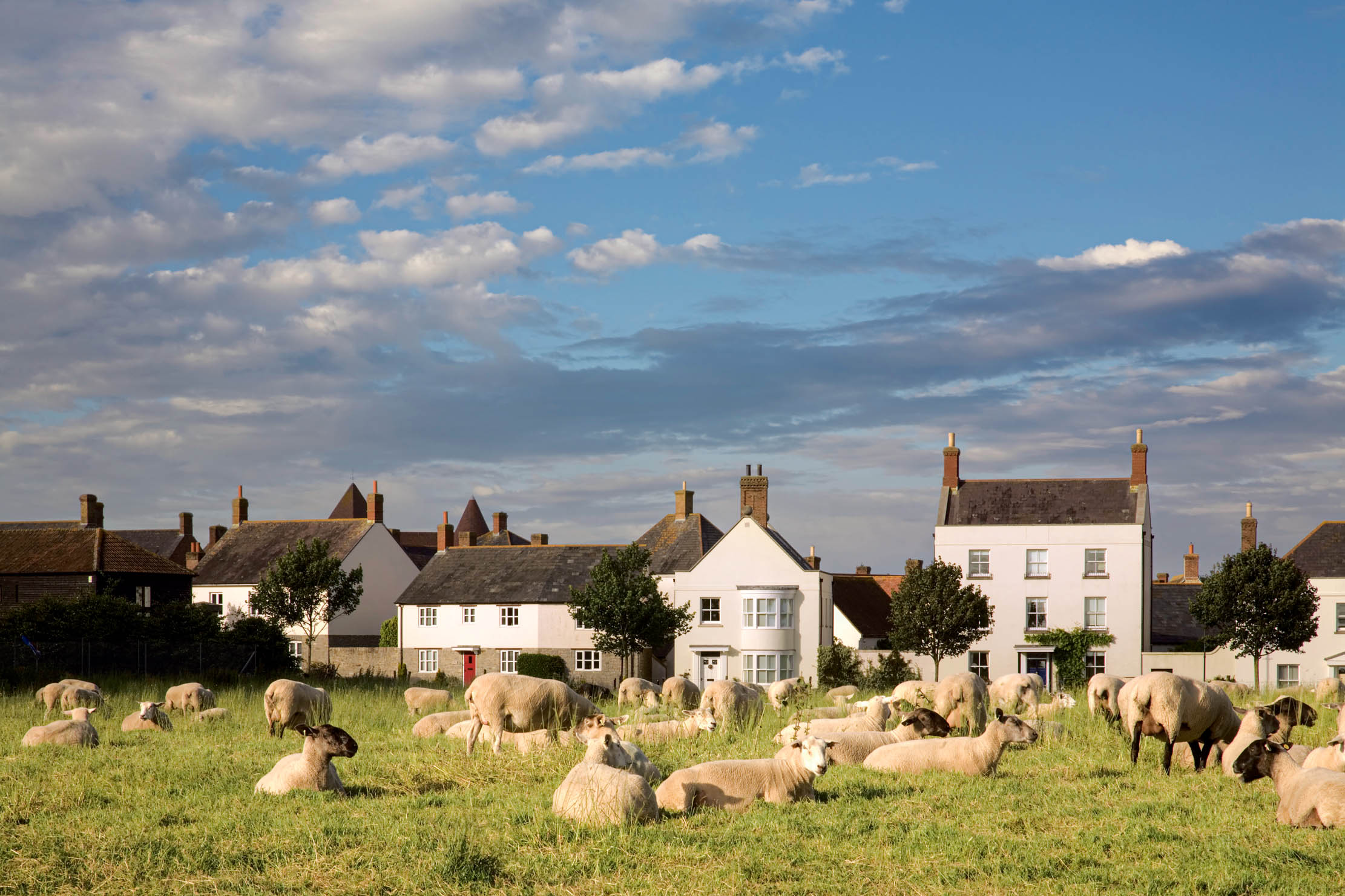
The important debate about new housing — how much is needed, where to build it and how to design it — continues to rage. Discussion of the issue, however, commonly generates more heat than light, with politicians, developers and local communities often making irreconcilable demands of each other. It doesn’t help, either, that coverage is usually framed in national terms, so the points of note in specific projects easily lose focus.
More helpful, therefore, is to try and look at the experience of a single county: Dorset. It’s the more interesting because it is here that one of the most debated of all recent developments that tried to break the mould — Poundbury, begun in 1993 — is now nearing completion.
The earliest phase of Poundbury (Fig 1), on the undistinguished western edge of Dorchester, is generally low rise, rarely more than two storeys, perhaps more villagey than urban. As the development has advanced uphill, it has become progressively more ambitious, with many taller buildings in Regency urban idioms — some of the terraces and groupings being reminiscent of Cheltenham — until the visitor arrives at the grandiose civic focus, the predominantly Palladian Queen Mother Square. Many Modernist architects and critics have sneered at Poundbury, but it would appear to have set a positive example to at least some of the county’s small builders and developers. They have drawn profitable lessons from it about how to deploy local materials and vernaculars and how to juxtapose components to achieve seemingly unselfconscious groupings of buildings in a wider development.
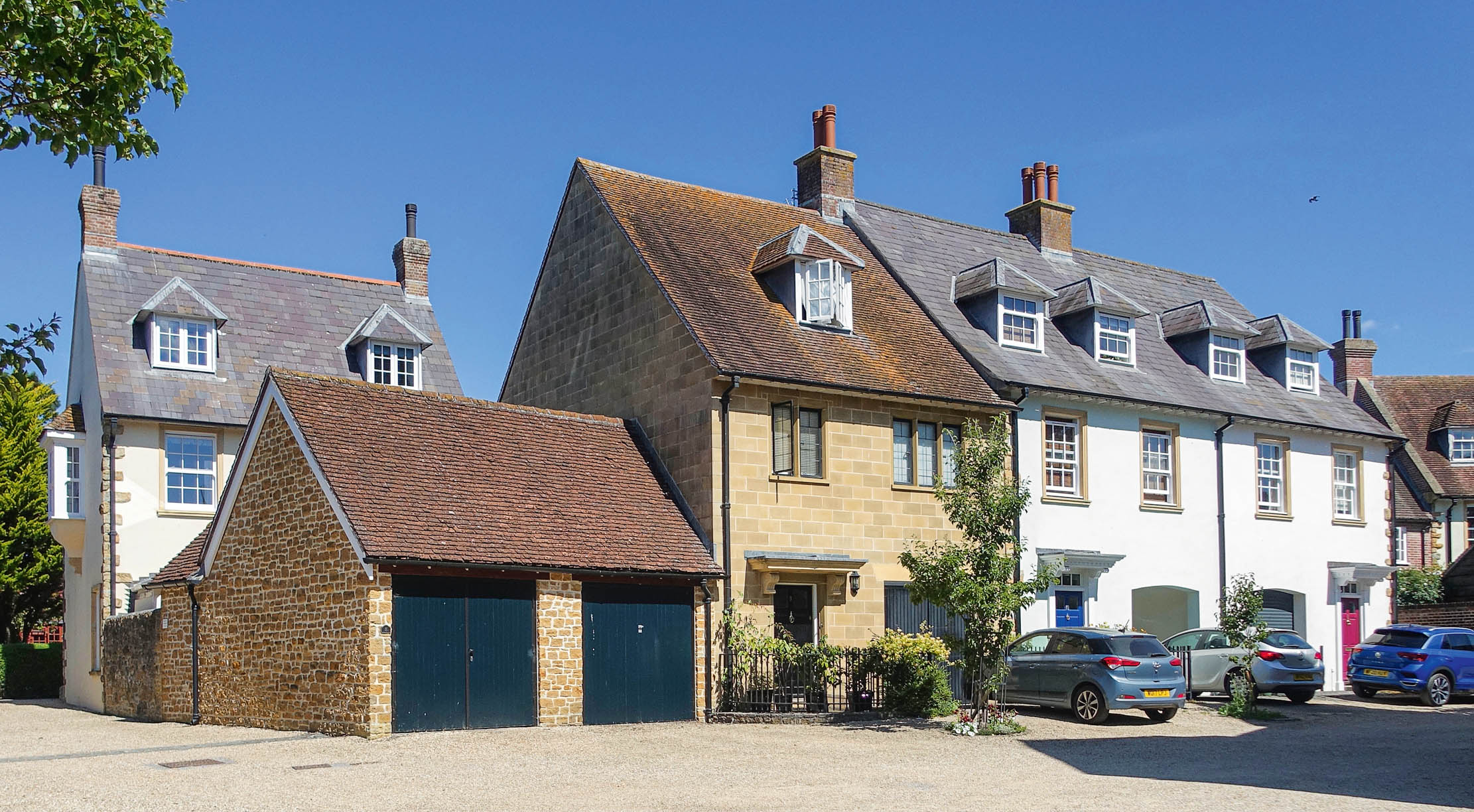
If matters of plan, scale, materials and idiom are part of the varied Poundbury legacy for Dorset, another is the role that public-spirited landowners can contribute to successful outcomes. That’s because The King, then Prince of Wales, challenged The Prince’s Foundation to engage more landowners and the associated professionals, developers and builders in creating attractive mixed-use, mixed-income, walkable communities. This led, in 2016, to the publication of Building a Legacy: A Landowner’s Guide to Popular Development, a prospectus that sets out a model of development aimed at creating social and economic value over the long term.
Across the country at large there are signal examples of large landowners who are not only able — in a way that smaller ones rarely can — to take a long-term view of development on their land, but who also see it as part of what might be called their public duty to facilitate such an approach; the Earl of Moray at Tornagrain in Scotland, the Bowood estate at Calne in Wiltshire and Sir Tim Knatchbull at Romsey in Hampshire, to name only three.
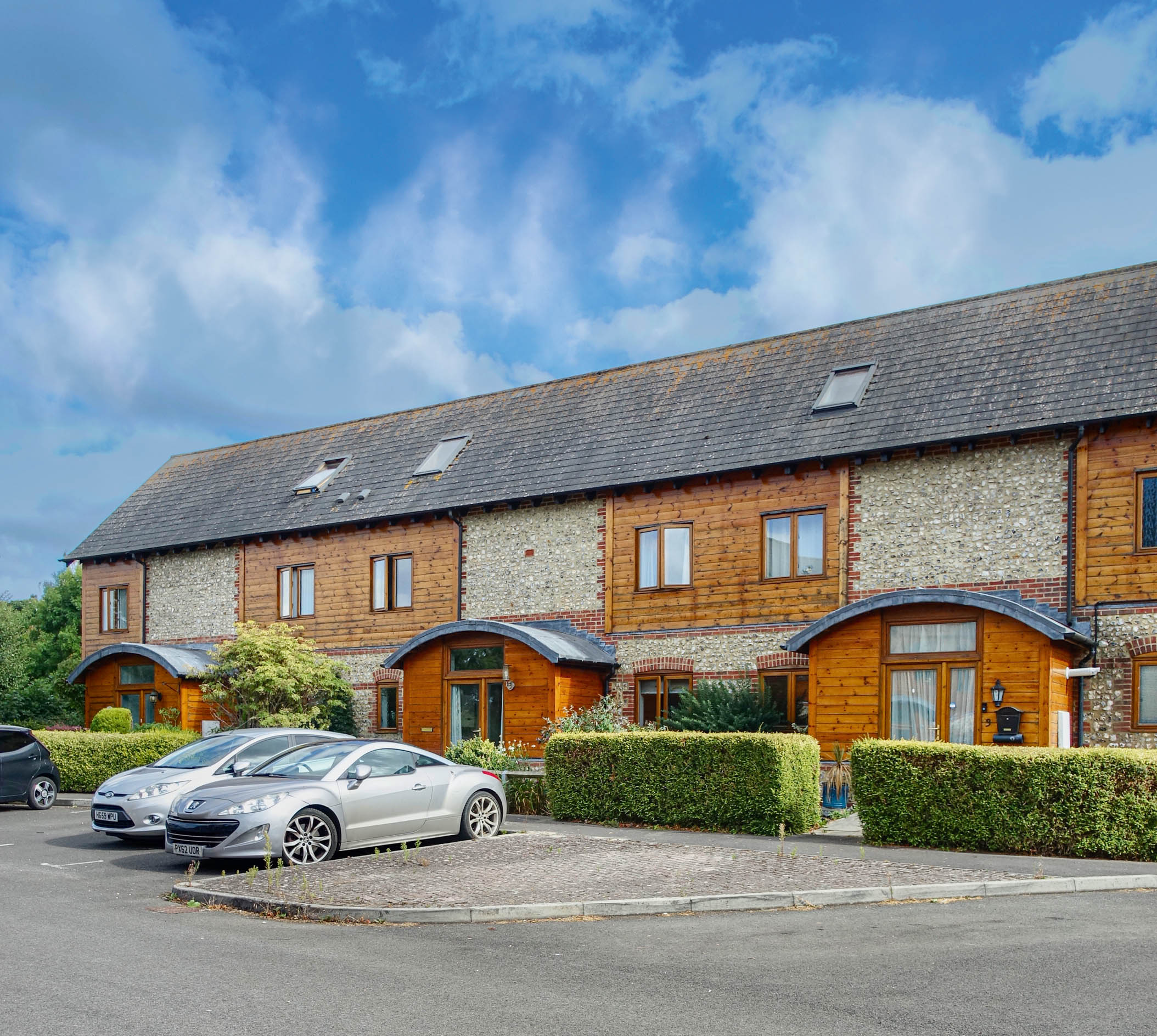
An important element of the national debate over development has been the controversy over top-down targets: quotas decided at Whitehall level and imposed on local authorities. The latter, in turn, feel obliged to sanction applications that will enable them to meet those targets, irrespective of whether the housing is actually what is needed in a particular area or, equally to the point, whether it is well designed and visually appropriate. Dorset Council’s current preferred approach to meeting Whitehall targets (which, until recently, were 30,000, excluding the Bournemouth and Poole area) is to have a few large developments attached to existing towns, such as Sherborne (Fig 4), Gillingham, Bridport and Shaftesbury. Largest of all, and the most contentious, would be ‘North Dorchester’, a proposed development of potentially 4,000 houses on the hitherto open chalk slopes to the north of the county town.
Although this approach can have advantages when properly designed (as at Poundbury) and obviously simplifies work for the planning department by minimising the number of applications, there is also a real need to add much more modest developments to villages that meet the certifiable and quantifiable need of local people. It is a recurrent complaint in attractive rural districts — and not only in Dorset — that every time a house comes on the market it is snapped up by buyers from outside the county and young locals cannot get a look in. One potential solution being actively investigated in the county is the concept of the community land trust, which offers the chance to restrict new housing to those who can demonstrate their local credentials — the first challenge being to find the necessary land at affordable prices.
Sign up for the Country Life Newsletter
Exquisite houses, the beauty of Nature, and how to get the most from your life, straight to your inbox.
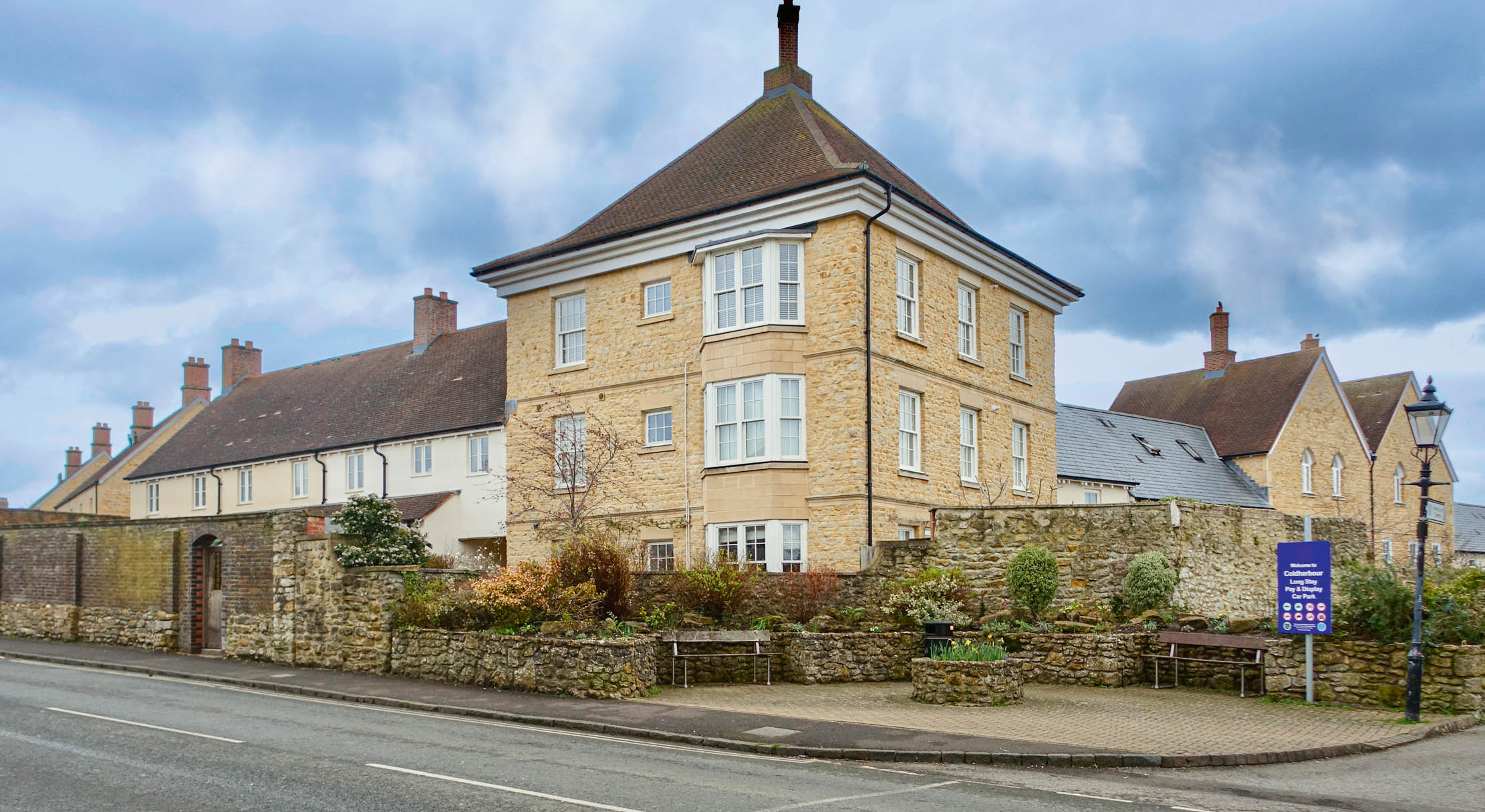
A top-down approach to housing targets also brings with it an aesthetic problem. In the UK today, the 10 biggest house-building companies now account for almost two-thirds of what is built, whereas a declining proportion — one-tenth — is accounted for by the small firms that build fewer than 100 houses per annum. An inevitable consequence of this is that local firms, which are well versed in local idioms and materials, cannot match what the larger developers offer landowners for their land. They are, therefore, being progressively squeezed out of the market. Large developers, however, are interested in economies of scale to generate their profit margins — reputed in one case to be an astonishing 30%. That involves building houses to generic designs.
In Dorset, the point is made by comparing two relatively recent developments added to Sherborne on land released by the principal local landowner, Sherborne Castle Estates. On the one hand there is Fosters Fields, quite a large development of 120 houses that dates from the early 2000s. This is the work of the county’s most significant local builder/developer, CG Fry (Fig 5). The layout is intricate and varied, as is the architecture. This is all in what would be called ‘traditional’ styles and materials, and ranges from Regency-inspired, three-storey, brick-and-render terraces to the characteristic Poundbury/Fry mix of smaller, two-storey groupings in different materials (Fig 9).
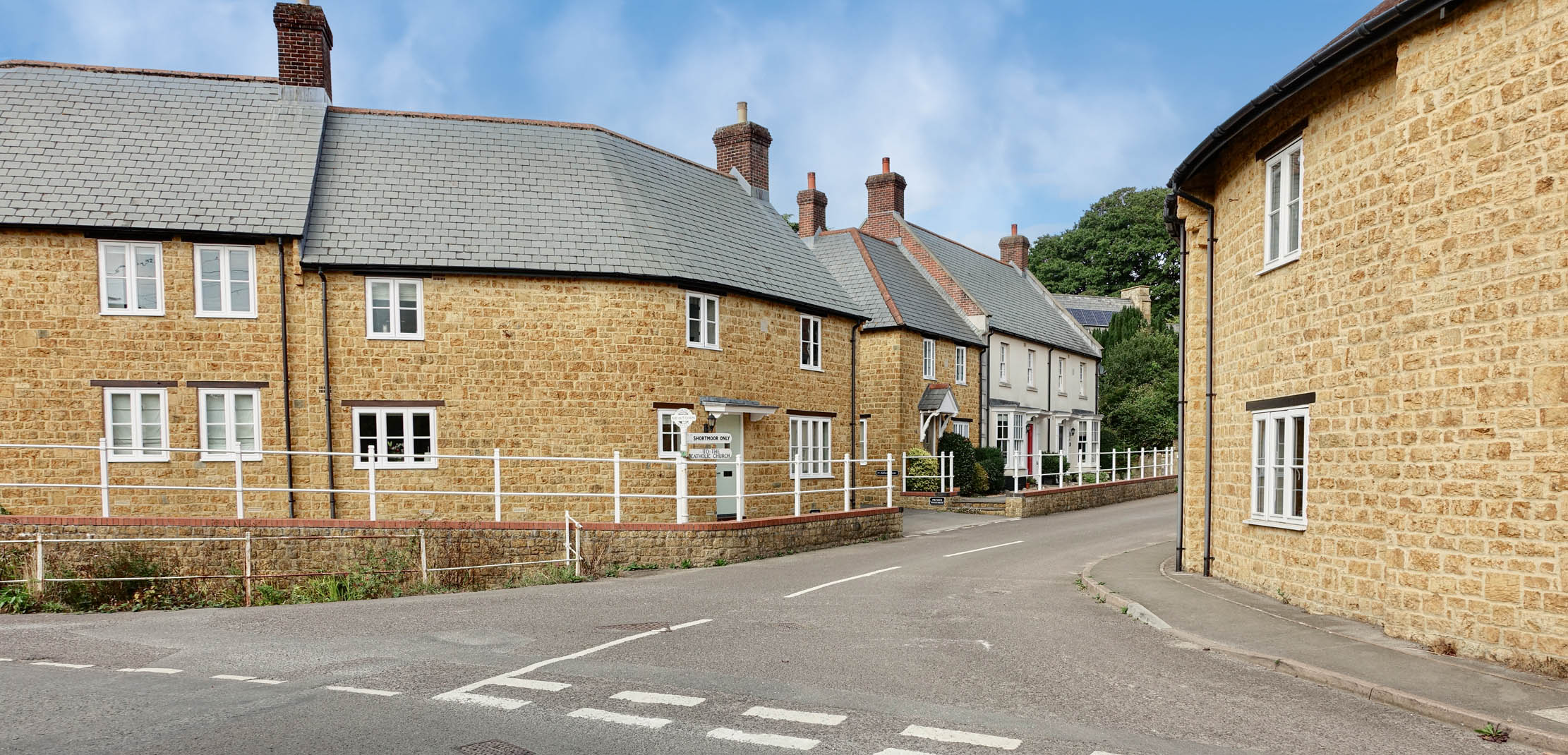
At the other edge of the town is a much more recent development of some 330 houses by a large national developer, Persimmon. Some would claim that it’s a subjective judgement, but this strikes me as a classic example of a large-developer scheme primarily driven by a policy of maximising profits and minimising design effort: poor layout and grouping of houses, with far too many shoe-horned onto the site, little attention to local materials, idiom and parking arrangements. Helpful design suggestions of building forms and local materials in the admirable planning brief of 2007 drawn up by the now-defunct West Dorset Council, being merely ‘advisory’, were seemingly disregarded. Nor is there any of the infrastructure one would expect from such a large development, including the shop and community hall specified by the planning brief.
As a firm, CG Fry has been long involved at Poundbury and has overseen some of the most successful additions to the county’s housing stock of recent decades (Fig 5). As in Sherborne, these are characterised by a mixture of traditional idioms, inspired by vernacular, Georgian, Victorian or Edwardian, carried out in a blend of brick, stone, render and flint, with roofs of tile, slate or thatch.
Good examples of the company’s work include 60 houses at West Allington on the western approach to Bridport, where the entrance off the main road is framed on one side by a thatched group with bands of flint and brick; on the other by a group in golden local stone. At Malthouse Meadow, Portesham, the mix of materials (silvery stone and brick) reflects the location a few miles inland from the coast at Chesil Beach. Executed in two phases, it includes a doctor’s surgery and affordable homes. The firm has also worked in a more urban idiom, as currently in the case of Chickerell, on the approach to the unlovely suburbs of Weymouth.
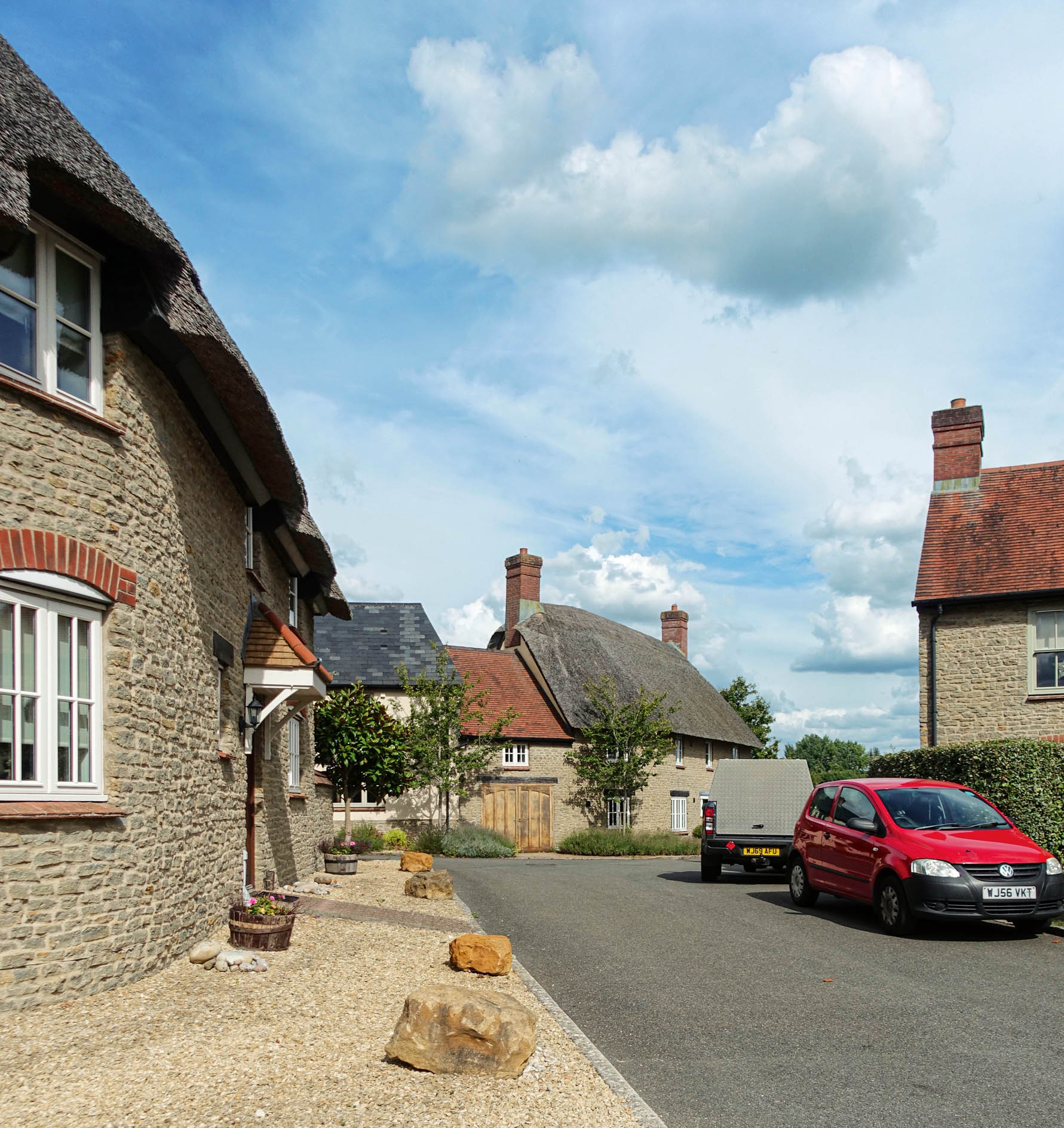
Meanwhile, in Abbotsbury, essentially an Ilchester estate village, a study of 1973 carried out for the estate by the Bath firm of William Bertram & Fell generated three small develoments that Michael Hill in the revised Dorset volume of The Buildings of England (2018) refers to as ‘exemplary’. One is a group of stepped thatched cottages by Clive Hawkins, which fits into the existing villagescape so smoothly that one barely notices it; the others are by Bertram & Fell and CG Fry, the latter with 28 homes, of which 20 are ‘affordable’.
Small Dorset schemes, slotted into towns and villages (Fig 6), show other architects/developers making predominantly positive contributions. In Sherborne, St Antony’s Square (Fig 2), designed with input from the late Anthony Jaggard, is a diminutive development of houses attractively varied in shape, predominantly stuccoed with Hamstone dressings under tiled roofs with dormers and grouped informally behind the Catholic church. It is now showing its age only in the sense that the integral garages are too small for the inflated average size of cars, which consequently get parked outside. Another small, but sensitive village scheme is the Coach House development in Fontmell Magna (Fig 7), a main-road village between Blandford Forum and Shaftesbury, designed by Peter Thompson Architects in 2005 and using the combination of brick and flint appropriate to a chalk area.
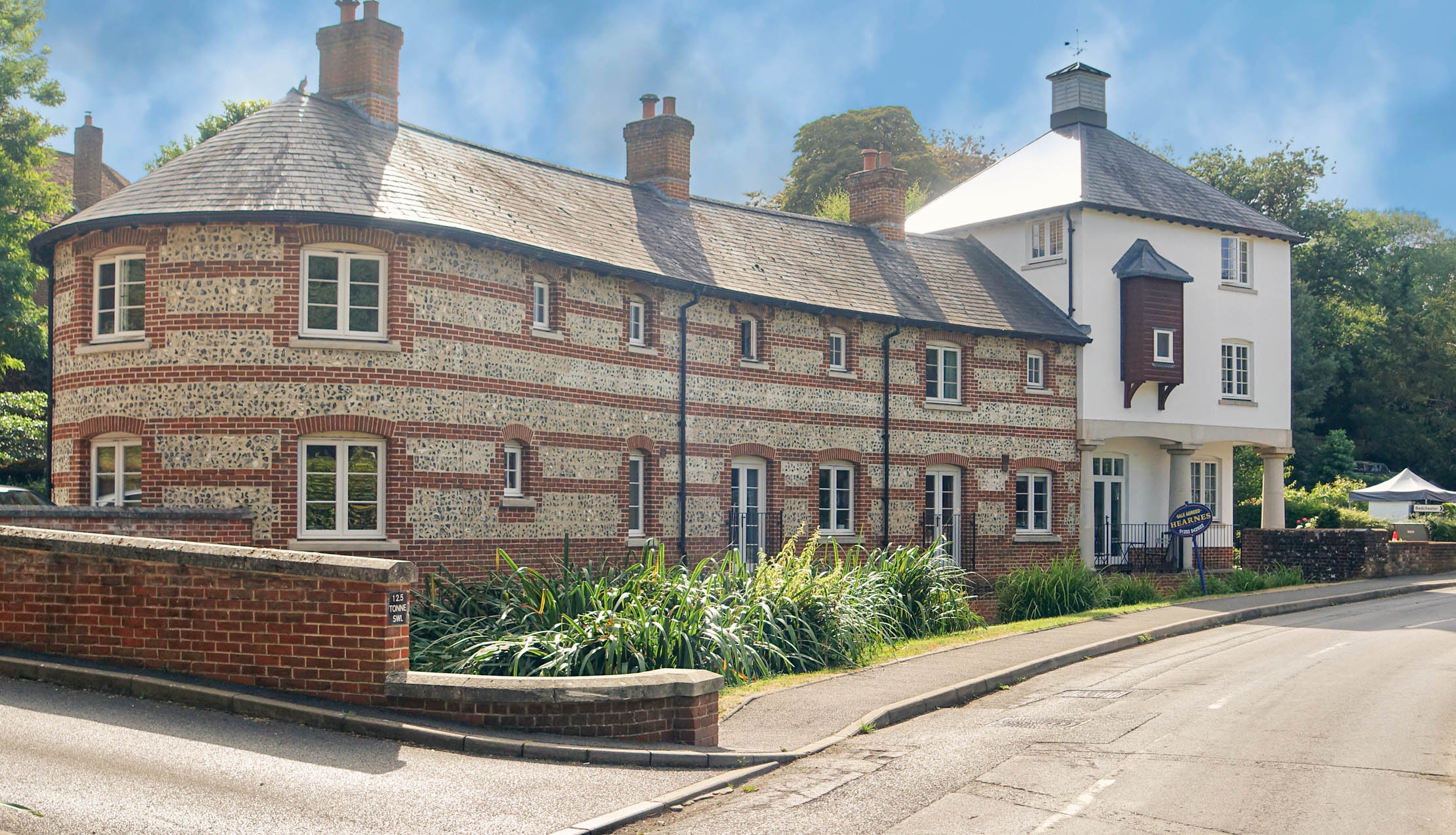
Wyatt Homes, one of the larger developers in the region, has a number of schemes in the county. At one of these, in Shillingstone, a striking Voysey-esque tower house at the entrance to the scheme (taking a cue from Poundbury) catches the eye from the village street, as does a pair of tall thatched houses further in (Fig 8); but, overall, there is perhaps too much variety of materials and styles and too much dark woodwork.
The scheme is also let down by a common problem even in some well-intentioned developments: the windows and doors are too often straight out of a catalogue and, on not-too-distant inspection, made of PVC. The Old Dairy in Child Okeford, an otherwise pleasant scheme by Parsons & Joyce in a neo-Victorian vein, is another example of a development spoilt aesthetically by plastic windows. In fairness, these features have sometimes been introduced by owners or occupants after the original build.
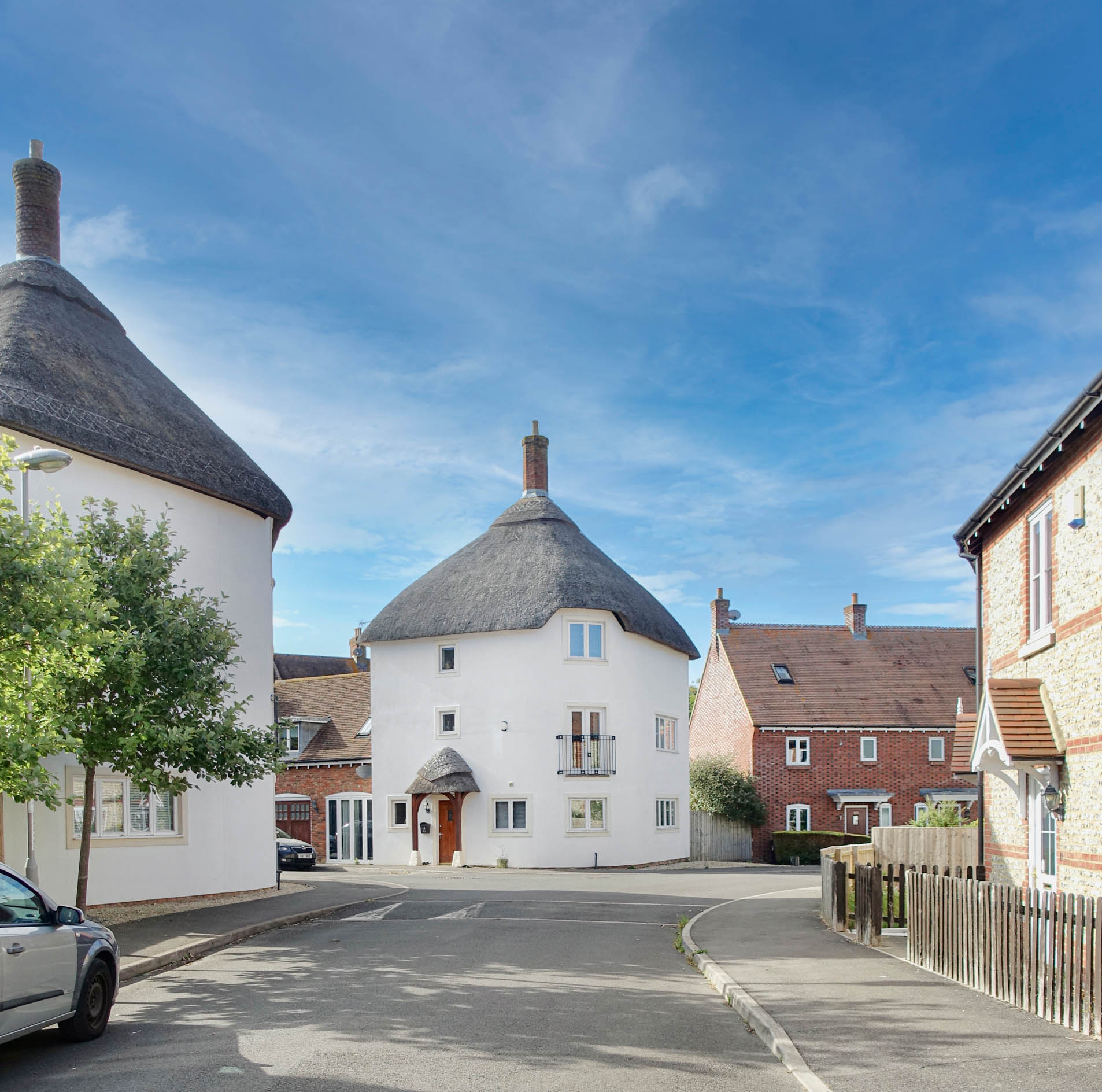
Another strictly aesthetic problem in some new developments is the absence of chimneys. The phasing out of gas boilers in the years ahead means that the chimneys that have diversified rooflines for hundreds of years will cease to have a function. It’s already apparent what the long-term effects of this might be: in Child Okeford, there is a new cul-de-sac called Bower (Fig 3), Modernist in style, but with appropriate local materials, with alternating panels of flint and wood cladding and brick details. There are, however, no chimneys, which makes the roofline boring. Growing pressure to install solar panels on roofs will create another aesthetic headache.
Compared with many other counties, it could be said that Dorset has been lucky in its recent housing developments and, certainly, it has been fortunate to have the example of Poundbury and the profitable lessons learned from it by firms such as CG Fry. But the threat from the very large developers, which have neither the inclination nor the business model that permits attention to either good aesthetics or good planning, remains. It is to be hoped that recent changes in Whitehall policy, aimed at combating the land-banking practised by large developers (that is, sitting on land for which planning permission has been granted, in order to keep prices up) and giving local councils and local people the power to insist on more sensitive and sympathetic design, bear rapid fruit.
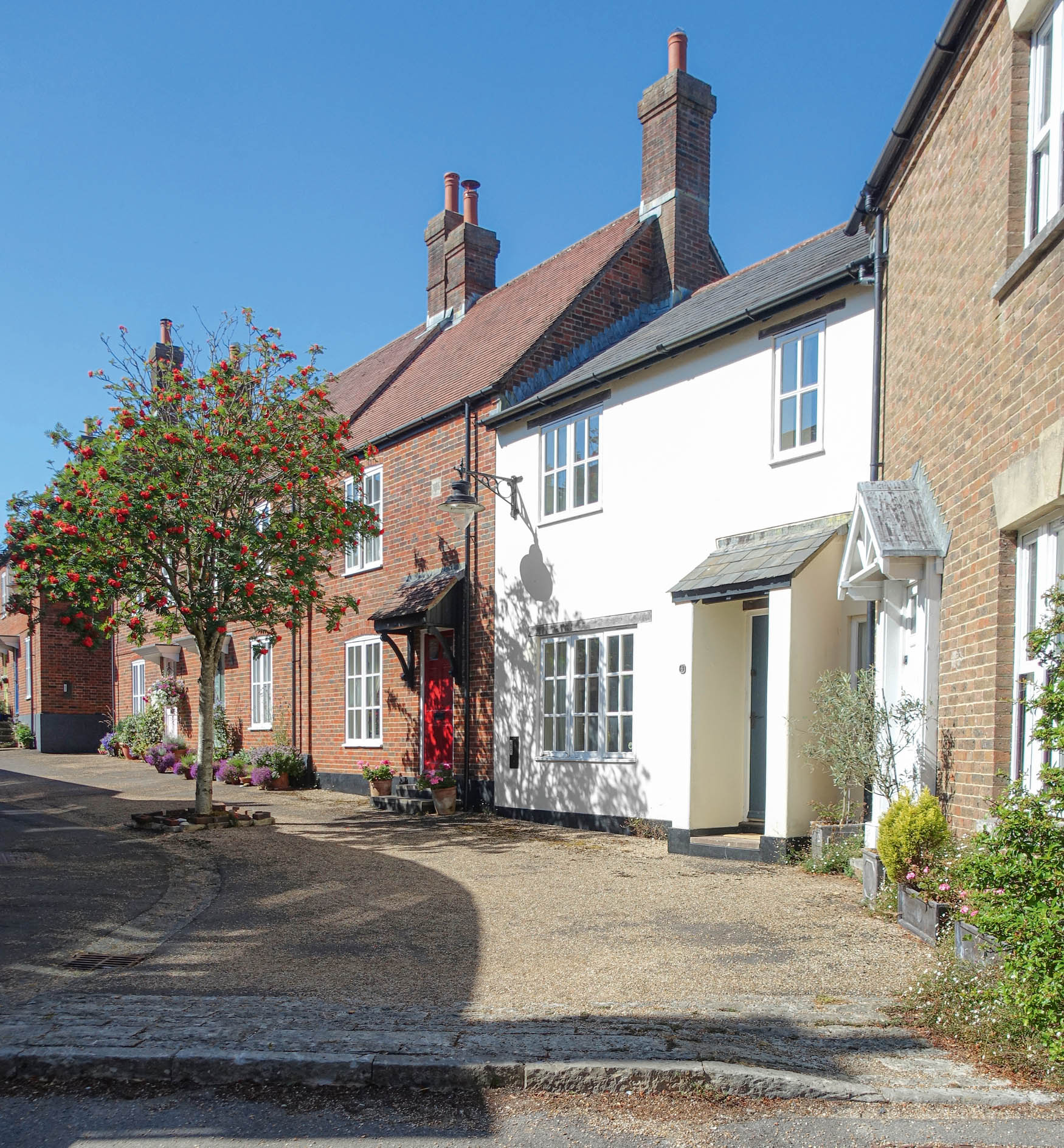
In 2020, the Dorset branch of the CPRE staged a conference aimed at the county’s leading landowners, which was addressed by, among others, Lord Moray, Ben Bolgar of The Prince’s Foundation and the architectural designer Ben Pentreath, who worked on Poundbury. It is perhaps too soon to see any concrete results from the day, but it can certainly be hoped that the lessons it offered will have been learned not only by the landowners, but also by the officials and councillors present from Dorset Council, whose theoretical responsibility it is to see that housing policy is administered in an enlightened way.
Acknowledgements: Philip Fry, Peter Neal

Credit: Strutt and Parker
Best country houses for sale this week
An irresistible West Country cottage and a magnificent Cumbrian country house make our pick of the finest country houses for
-
 The loos of Buckingham Palace: Country Life Quiz of the Day, April 23, 2025
The loos of Buckingham Palace: Country Life Quiz of the Day, April 23, 2025Wednesday's Quiz of the Day looks at St George, royal toilets and German alcohol laws.
By Toby Keel Published
-
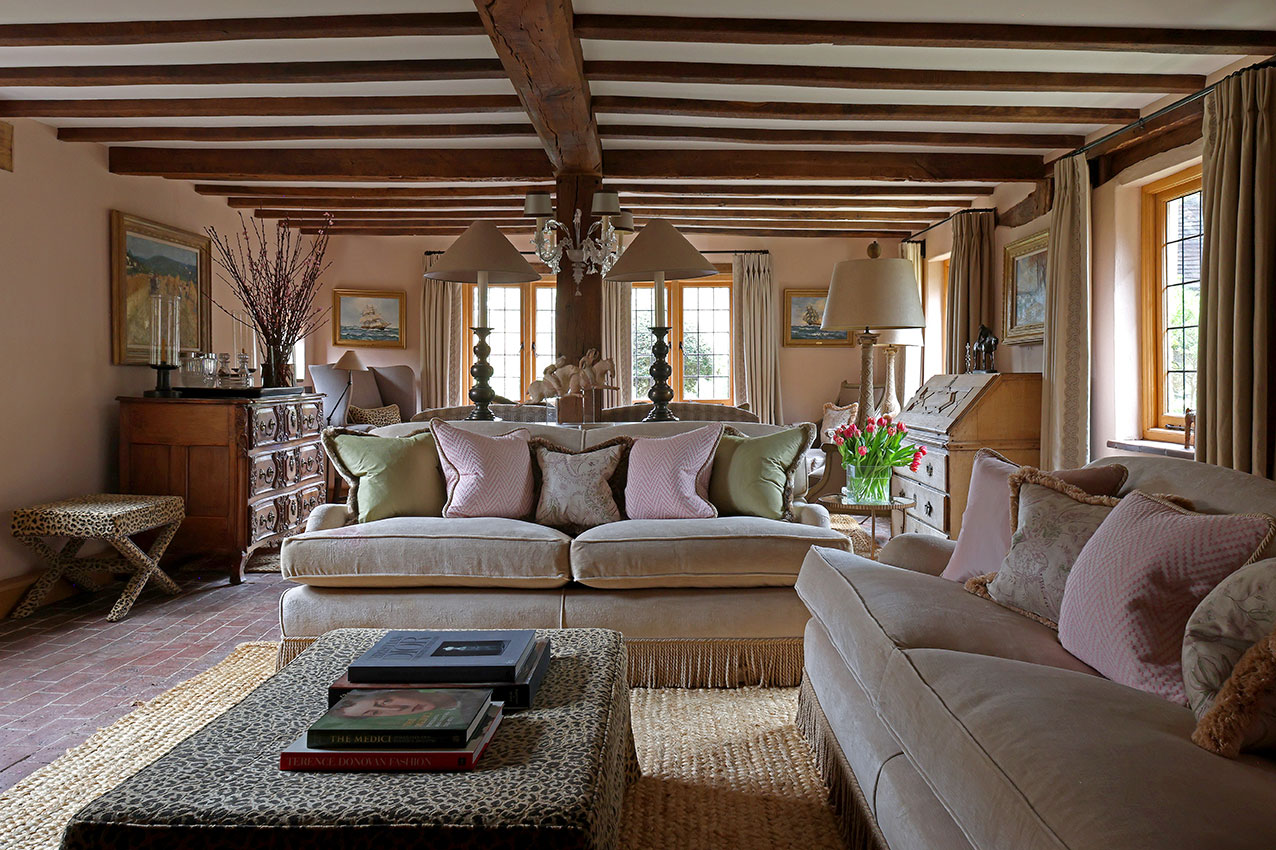 Moore Design
Moore DesignMoore Design is a boutique interior design practice with clients around the UK and overseas.
By Country Life Published
-
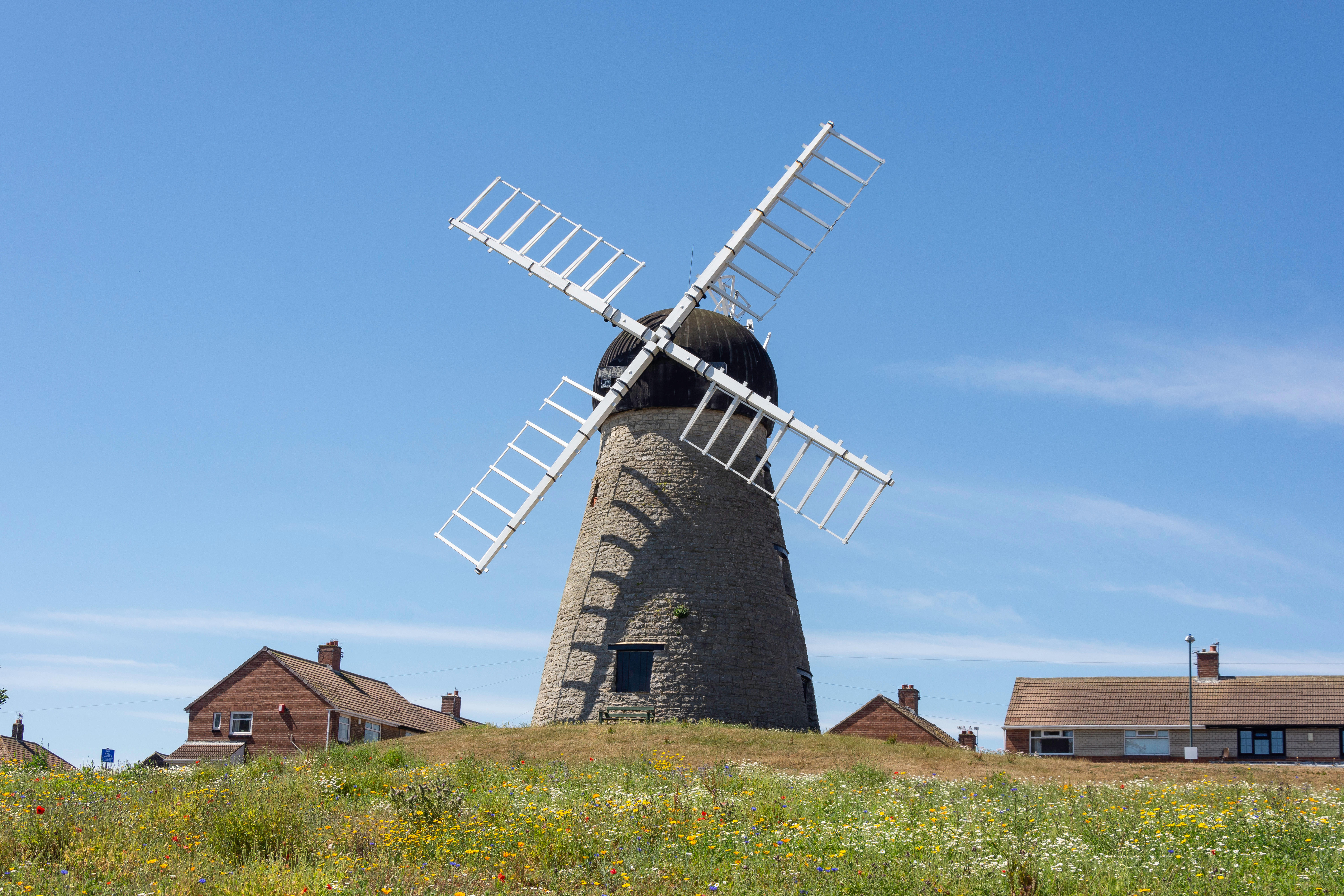 The 'best places to live' ranking that lists all 1,447 towns, cities and large villages in England and Wales — who is this year's winner?
The 'best places to live' ranking that lists all 1,447 towns, cities and large villages in England and Wales — who is this year's winner?Redbourn has been named the best place to live in the country.
By Annabel Dixon Published
-
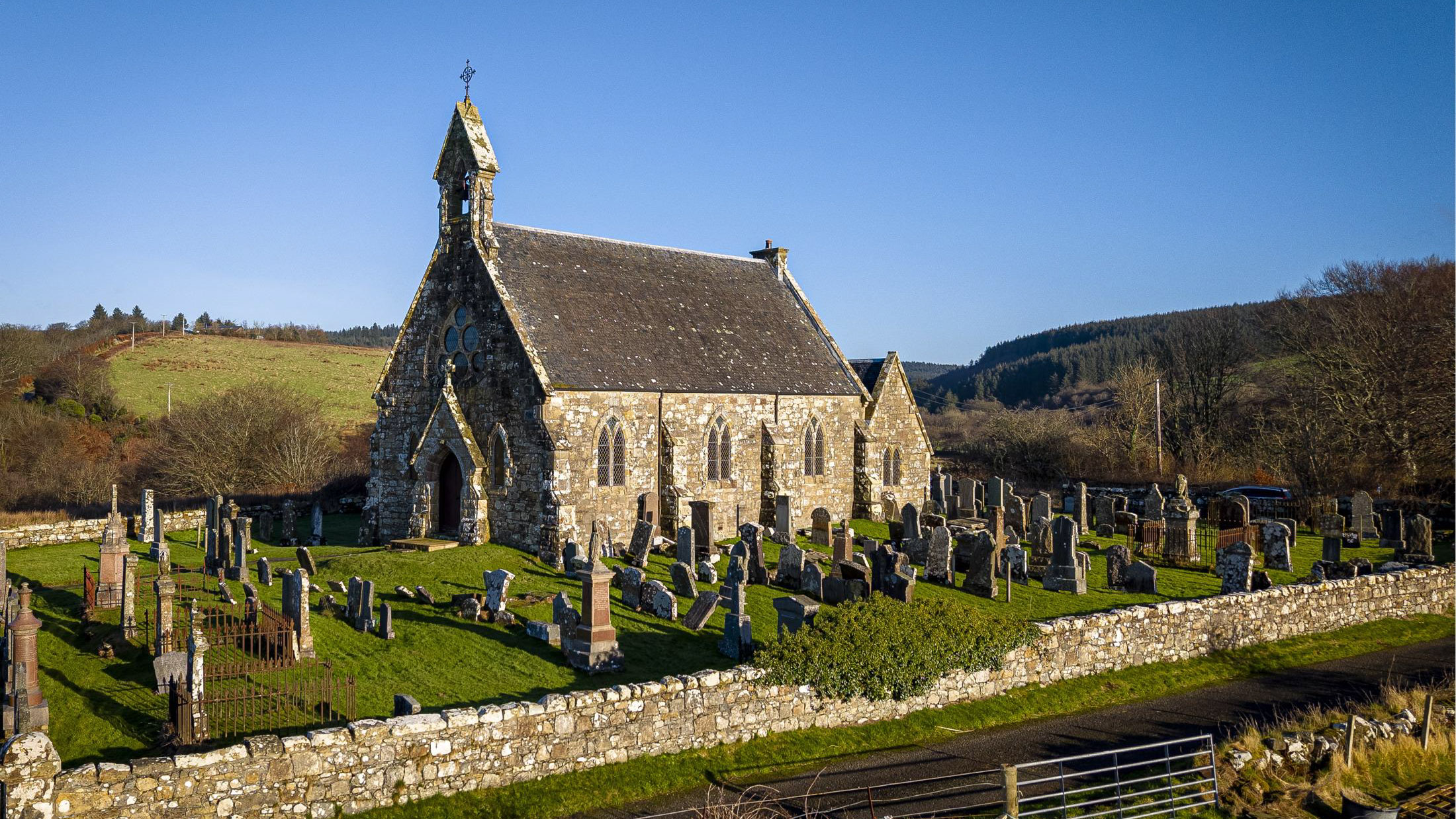 Some of Scotland's most beautiful churches are being sold off for as little as £40,000 — but a word of warning before you take the plunge
Some of Scotland's most beautiful churches are being sold off for as little as £40,000 — but a word of warning before you take the plungeLucy Denton examines how best to help former church buildings thrive as times move on and property changes hands.
By Lucy Denton Published
-
 Two-thirds of us buy a house and immediately set about refurbishing it
Two-thirds of us buy a house and immediately set about refurbishing itWe spend more buying our houses than on anything else in our lives — yet the first thing we do on moving in is set about changing the place. Annabel Dixon takes a look at what we do and why.
By Annabel Dixon Published
-
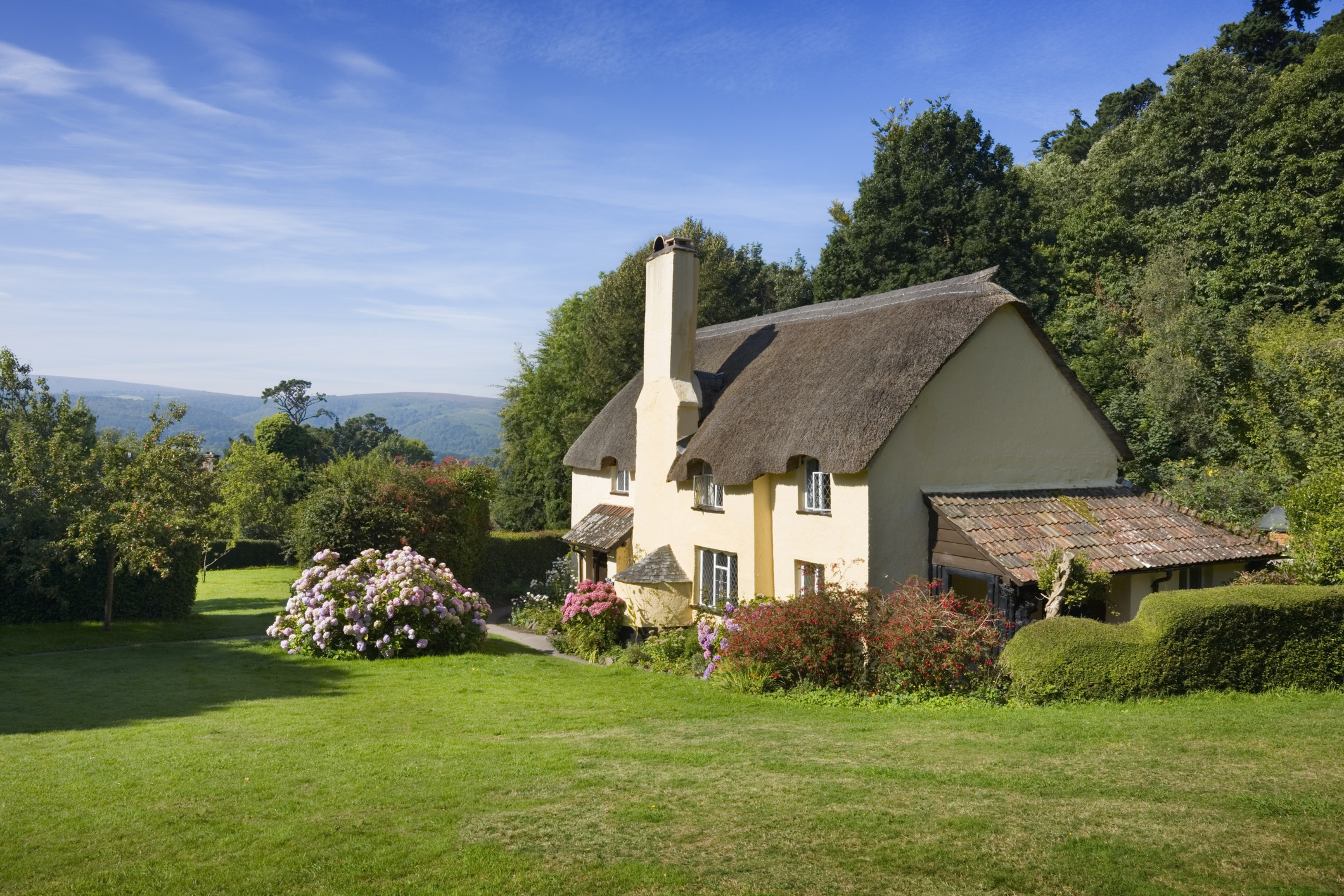 The Catch-22 that's clogging up the housing market? The over-50s sitting in half-empty houses while young families struggle to find homes that are big enough
The Catch-22 that's clogging up the housing market? The over-50s sitting in half-empty houses while young families struggle to find homes that are big enoughWhile the vast majority of empty nesters living in larger properties don’t intend to downsize, upsizers are struggling to climb up the housing ladder, says Regency Living.
By Annabel Dixon Published
-
 More than a quarter of parents 'bend rules or even lie' to get their children into the right school
More than a quarter of parents 'bend rules or even lie' to get their children into the right schoolA survey by Zoopla reveals just how far parents are prepared to go to get their child into a top school. So, what would you do?
By Annabel Dixon Published
-
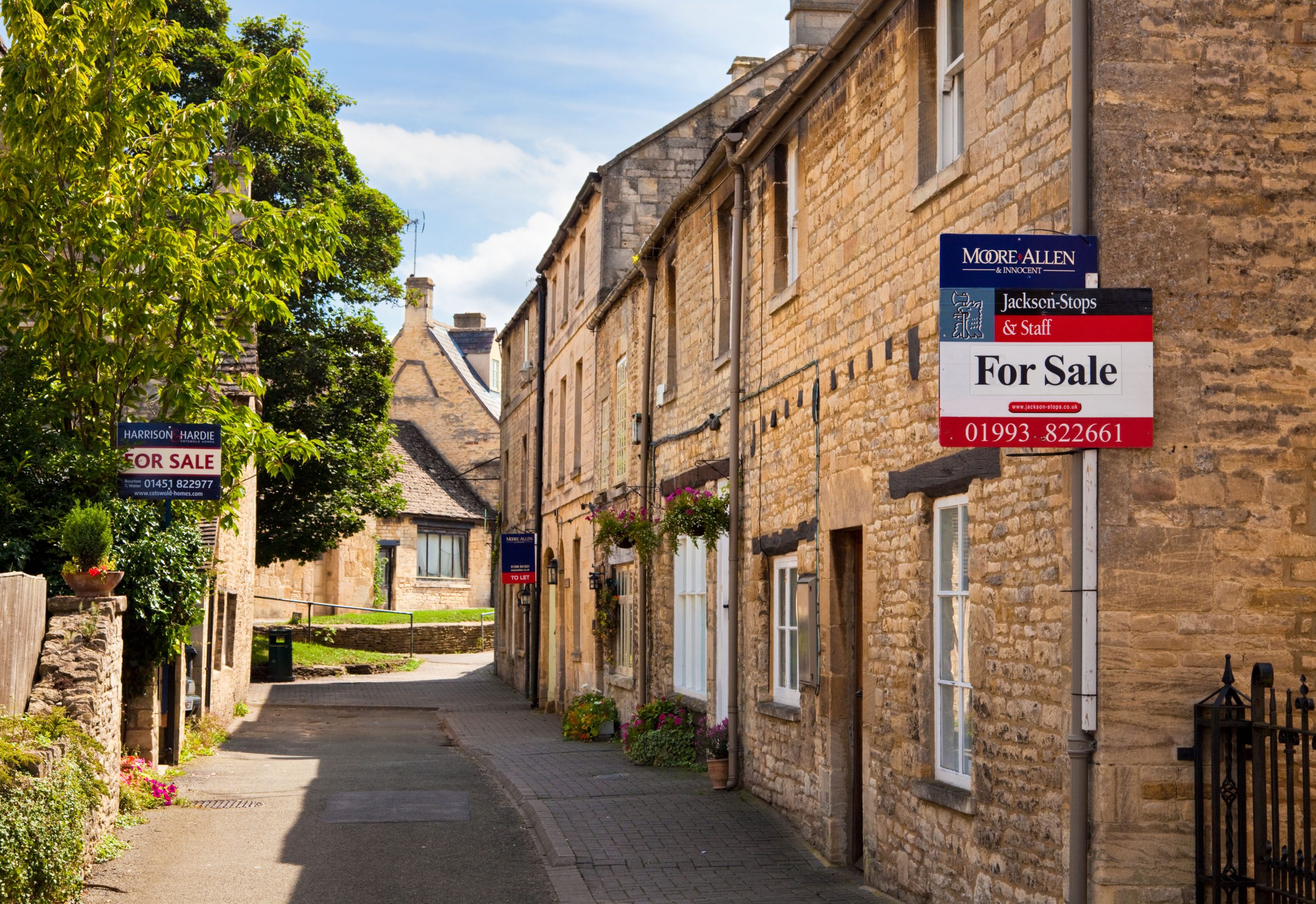 More than a quarter of property sales collapsed in 2024. Here's why.
More than a quarter of property sales collapsed in 2024. Here's why.The most common reason for sales falling through last year? Buyers pulling out or failing to renegotiate the purchase price following a property survey.
By Annabel Dixon Published
-
 'Like living in an episode of Top Gear': The beautiful rural spots where people use McLarens and Ferraris to pop down to the shops
'Like living in an episode of Top Gear': The beautiful rural spots where people use McLarens and Ferraris to pop down to the shopsUsing exclusive data compiled by Savills, Anna White takes us through the rural districts where you'll find the most supercars, and reveals the extreme lengths owners will go to look after them.
By Anna White Published
-
 Going up? The property market's top experts on what will happen to house prices in 2025
Going up? The property market's top experts on what will happen to house prices in 2025After a jam-packed year, could a brighter and more stable housing market be around the corner? Here’s our round-up of house price predictions from those in the know.
By Annabel Dixon Published
